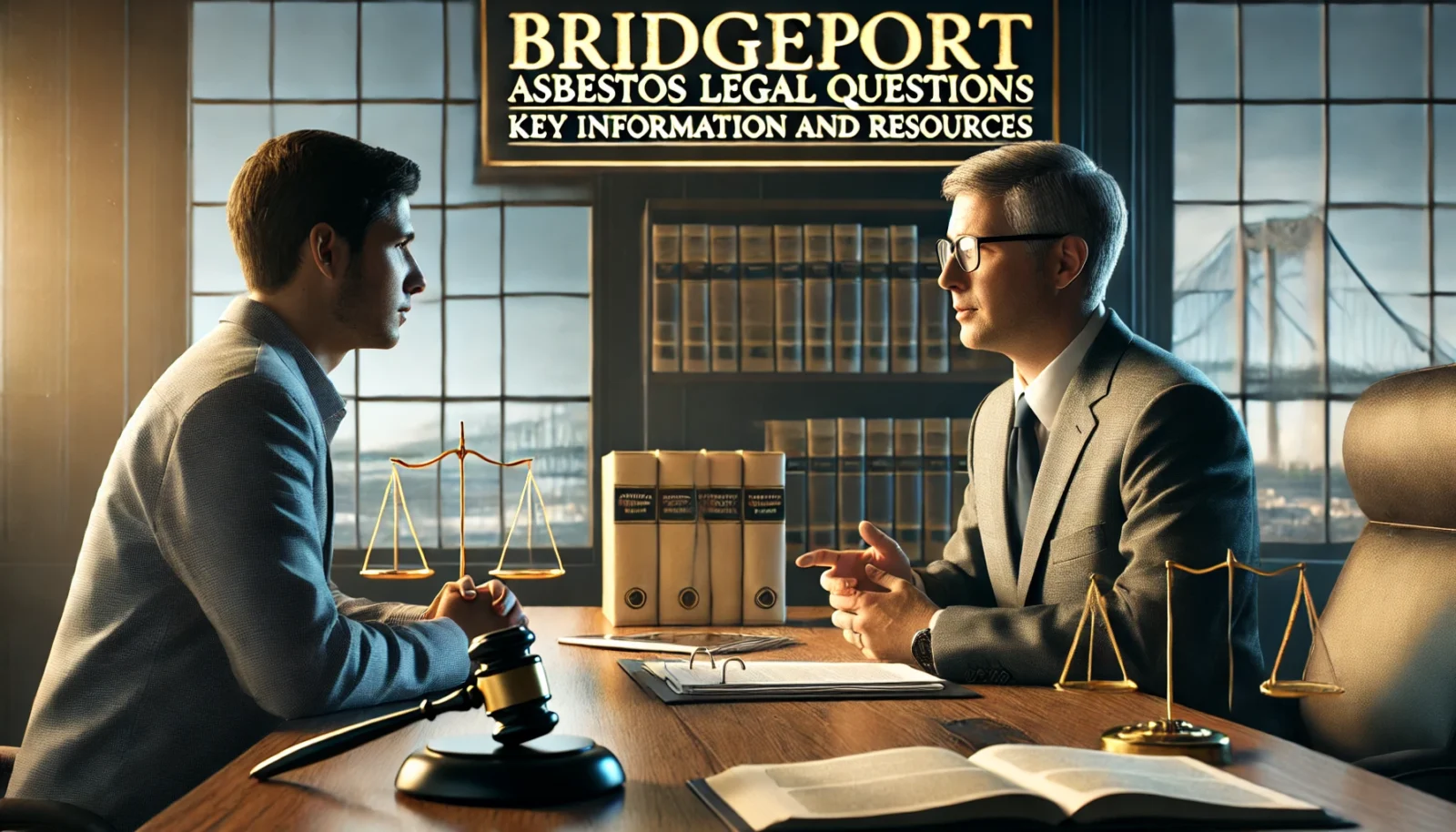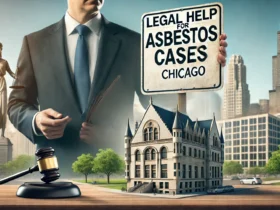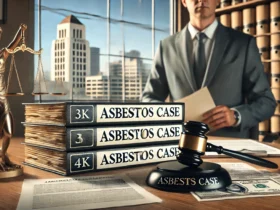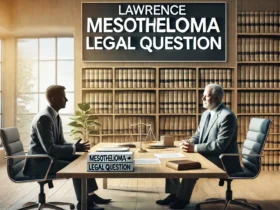Introduction
Bridgeport asbestos legal question focuses on a serious problem involving a harmful substance. Asbestos is a material once used in many buildings and products for its fire-resistant properties. However, it is now known to cause serious health issues like lung cancer and mesothelioma when its fibers are inhaled. This makes asbestos a major legal concern. People who were exposed to asbestos may seek compensation through the legal system for the health problems they face.
Bridgeport has a history with asbestos because many buildings in the area were constructed with it in the past. This historical use has led to a number of legal cases where individuals affected by asbestos-related diseases have sought justice and compensation. Bridgeport asbestos legal question involves understanding the rights of those affected and the responsibilities of those who used or managed asbestos-containing materials. The legal issues can be complex, often requiring specialized knowledge to navigate successfully.
Understanding Asbestos And Its Risks
Asbestos is a group of minerals composed of tiny, durable fibers. These fibers are strong and resistant to heat, which made asbestos popular for various uses. In the past, asbestos was commonly used in construction materials like insulation, roofing, and flooring. It was also found in products such as brake pads and tiles.
Exposure to asbestos poses serious health risks. When asbestos fibers become airborne and are inhaled, they can lead to severe diseases. One major risk is asbestos-related lung cancer. Another serious condition is mesothelioma, a cancer that affects the lining of the lungs, chest, or abdomen. Additionally, prolonged exposure can cause asbestosis, a chronic lung disease that makes breathing difficult. These health risks make asbestos exposure a significant concern.
Understanding these risks highlights why asbestos was used in the past despite its dangers. The history of its use has led to many legal and health challenges, as individuals who were exposed seek answers and compensation for their illnesses.
Historical Context Of Asbestos In Bridgeport
Bridgeport has a rich industrial history, with many factories and buildings constructed during the late 19th and early 20th centuries. During this time, asbestos was widely used for its heat-resistant properties. The city’s industrial growth led to extensive use of asbestos in various facilities.
Several major sites in Bridgeport were known for their use of asbestos. For example, the Bridgeport Brass Company and other manufacturing plants used asbestos in their products and building materials. These sites contributed to widespread exposure among workers and residents. The use of asbestos in these facilities has resulted in significant health concerns and legal issues over the years.
The historical use of asbestos in Bridgeport highlights the long-term impact on public health and the ongoing legal challenges related to asbestos exposure.
Legal Framework Surrounding Asbestos
The legal framework surrounding asbestos includes various regulations at the federal, state, and local levels.
At the federal level, agencies like the EPA (Environmental Protection Agency) and OSHA (Occupational Safety and Health Administration) set rules to manage and control asbestos. The EPA regulates the use, removal, and disposal of asbestos to protect the environment and public health. OSHA establishes safety standards to protect workers from asbestos exposure in workplaces.
In Connecticut, state-specific laws address asbestos management. The Connecticut Department of Public Health oversees regulations related to asbestos abatement and ensures compliance with state laws. These laws require proper training for professionals handling asbestos and set standards for its removal and disposal to minimize health risks.
Local governments in Bridgeport also play a role in managing asbestos. They enforce building codes and regulations that align with both federal and state guidelines. Local agencies often oversee inspections and remediation efforts to address asbestos in public and private properties. This multi-level approach helps ensure safe practices and address the challenges associated with asbestos.
Common Legal Issues In Asbestos Cases
In asbestos cases, there are several common legal issues that arise.
One major type of asbestos-related claim is personal injury. This type of claim is filed by individuals who have developed health issues, such as lung cancer or mesothelioma, due to asbestos exposure. Another type is wrongful death, which is filed by family members of individuals who have died as a result of asbestos-related diseases.
Filing an asbestos claim involves several steps. First, the individual or their representative must gather evidence of asbestos exposure and its link to the health condition. This evidence is then used to file a claim with the responsible parties, which could include former employers or manufacturers. Legal professionals often assist in navigating the complexities of these claims.
In Connecticut, the statute of limitations for filing asbestos claims is generally three years from the date of diagnosis or from when the illness should have been discovered. This time limit varies based on the specifics of the case, so it’s important to seek legal advice promptly.
Notable Asbestos Litigation In Bridgeport
Bridgeport has seen notable asbestos litigation over the years. One high-profile case involved workers from the Bridgeport Brass Company who developed serious health conditions due to asbestos exposure. This case drew significant attention due to the scale of exposure and the number of affected individuals.
Another prominent case involved a class-action lawsuit where residents of certain neighborhoods sought compensation for asbestos contamination from nearby industrial sites. These cases highlighted the broader impact of asbestos beyond just workplace settings.
Key legal precedents from these cases have shaped future asbestos litigation. Courts have established important principles regarding liability and compensation for asbestos-related illnesses. For instance, rulings on how to prove causation and the responsibility of manufacturers and employers have influenced how similar cases are handled today.
These precedents impact future asbestos cases by setting standards for how evidence must be presented and how damages are calculated. They help ensure that those affected by asbestos exposure have a clearer path to seeking justice and compensation.
How To Seek Legal Help
To seek legal help for asbestos issues, follow these steps:
1. Finding a Qualified Asbestos Attorney in Bridgeport: Look for attorneys who specialize in asbestos cases. They should have experience with asbestos litigation and a proven track record of handling similar claims. Start by researching online or asking for referrals from trusted sources. You can also contact local bar associations for recommendations.
2. Questions to Ask When Consulting with an Asbestos Lawyer: When meeting with a lawyer, ask about their experience with asbestos cases and their approach to handling such claims. Inquire about their success rate and how they plan to investigate and build your case. Also, ask about the fees and whether they work on a contingency basis, meaning they only get paid if you win the case.
3. Resources for Legal Assistance and Support: Several organizations offer resources for those affected by asbestos. The American Cancer Society and the Mesothelioma Applied Research Foundation provide information and support. Legal aid societies in Bridgeport may also offer assistance. Additionally, online forums and support groups can offer advice and connect you with others in similar situations.
By following these steps, you can find the right legal help to address asbestos-related issues and seek appropriate compensation.
Asbestos Abatement And Safety Measures
When dealing with asbestos, it’s crucial to follow legal and safety measures to prevent health risks and legal issues.
1. Legal Requirements for Asbestos Removal: The removal of asbestos must comply with federal and state regulations. The EPA and local authorities set rules for proper abatement procedures. These regulations require certified professionals to handle asbestos removal and ensure that the process meets safety and environmental standards. Property owners must obtain the necessary permits and follow guidelines to ensure legal compliance.
2. Guidelines for Safe Handling and Disposal of Asbestos: Safe handling involves using protective gear and minimizing dust to prevent asbestos fibers from becoming airborne. Asbestos must be properly sealed in containers during removal and disposed of at licensed facilities designed to handle hazardous materials. It is essential to follow specific procedures to avoid contamination and ensure that all safety protocols are adhered to.
3. How Property Owners Can Ensure Compliance: Property owners should hire licensed asbestos abatement contractors who follow all legal and safety requirements. They should also verify that the contractor’s work is done according to regulations and inspect the site for compliance. Regular monitoring and adherence to local regulations help ensure that asbestos removal and disposal are handled safely and legally.
By following these guidelines, property owners can manage asbestos safely and meet all legal requirements.
Recent Developments And Changes In Asbestos Law
Recent developments in asbestos law reflect ongoing changes and trends in both legislation and litigation.
1. Recent Changes in Legislation or Regulations: Recently, there have been updates to asbestos regulations aimed at strengthening safety measures and improving transparency. New laws often focus on stricter requirements for asbestos removal and disposal, enhancing protections for workers and the public. For example, recent amendments may include tighter controls on asbestos abatement procedures and more rigorous reporting requirements for asbestos use and exposure.
2. Current Trends in Asbestos Litigation and Legal Practices: Asbestos litigation continues to evolve with trends such as increased use of scientific evidence to link asbestos exposure to specific diseases. Courts are also seeing more cases involving claims for secondary exposure, where individuals who were not directly exposed to asbestos but came into contact with it through family members or other indirect means seek compensation. Additionally, there is a growing emphasis on the rights of victims and more substantial settlements being awarded. Legal practices are adapting by incorporating advanced technology and expert testimony to strengthen cases and improve outcomes for plaintiffs.
These recent changes and trends highlight the ongoing efforts to address the complexities of asbestos exposure and ensure fair legal practices for those affected.
Conclusion
In summary, the Bridgeport asbestos legal question involves several important issues. Asbestos is a dangerous material linked to severe health problems like lung cancer and mesothelioma. Bridgeport has a history of asbestos use in industrial sites, leading to many legal cases. Federal regulations by the EPA and OSHA set rules for managing asbestos, while Connecticut has specific laws for asbestos handling. Local government also plays a role in ensuring compliance with these regulations.
Asbestos litigation in Bridgeport includes high-profile cases that have set important legal precedents. These cases have influenced how asbestos claims are handled today. Seeking legal advice is crucial if you are affected by asbestos. A qualified attorney can guide you through the legal process and help you understand your rights.
It is also important to take necessary precautions if you suspect the presence of asbestos. Hiring certified professionals for asbestos removal and following safety guidelines can prevent health risks. For anyone dealing with asbestos exposure or related issues, getting expert legal help and staying informed about safety measures are key steps to take.
Frequently Asked Questions (Faqs)
What Should I Do If I Suspect Asbestos In My Home Or Workplace?
If you suspect asbestos in your home or workplace, the first step is not to disturb the material. Asbestos can become dangerous when its fibers are released into the air. Contact a certified asbestos professional to inspect and test the suspected material. They can confirm if it is asbestos and advise on safe removal or management procedures.
How Long Do I Have To File An Asbestos Lawsuit?
The time limit for filing an asbestos lawsuit varies by state. In Connecticut, you generally have three years from the date of diagnosis or discovery of the asbestos-related illness to file a claim. It is important to act promptly, as waiting too long could affect your ability to seek compensation.
What Compensation Can I Expect From An Asbestos Lawsuit?
Compensation from an asbestos lawsuit can vary widely based on the specifics of the case. It may include damages for medical expenses, lost wages, pain and suffering, and other related costs. In some cases, there may also be punitive damages if the responsible party’s actions were particularly egregious. Consulting with a qualified asbestos attorney can provide a clearer picture of potential compensation based on your situation.
To read more, visit our blog page. We do have more topics!












Got a Questions?
Find us on Socials or Contact us and we’ll get back to you as soon as possible.